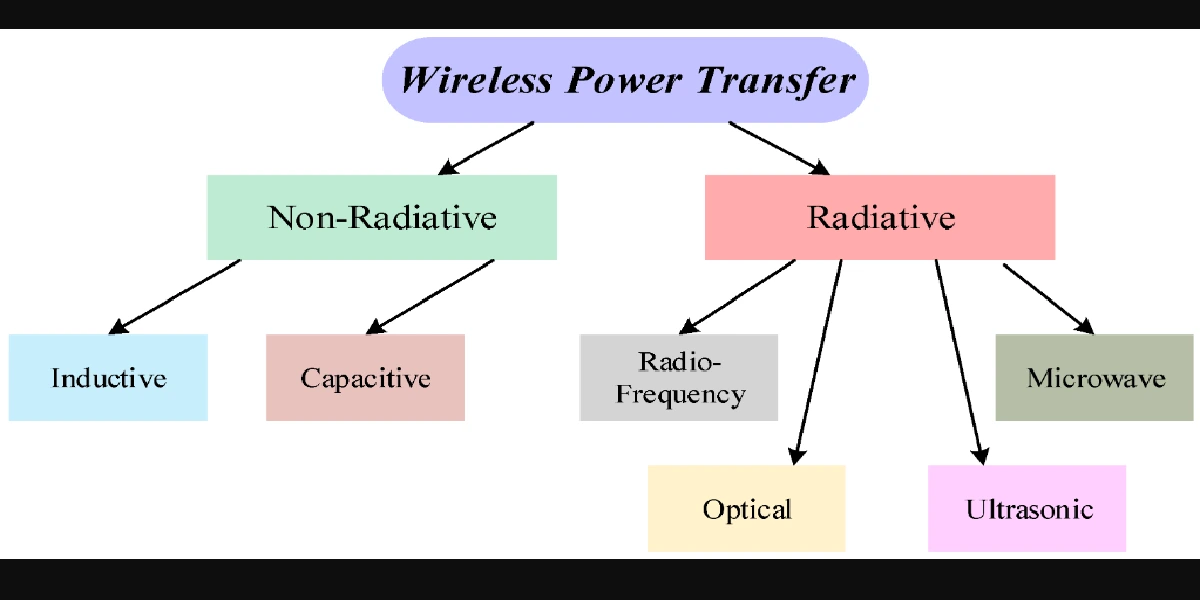Wireless power transfer (WPT) is science fiction no more. It’s the magic that charges your phone without the plug and the quiet engine that can power your EV as you drive. WPT is a game-changer in the technology world in today’s fast-paced, wire-phobic environment.
What is Wireless Power Transfer?
WPT is a way of transferring electrical energy without the use of wires or physical connections. It transfers energy through electromagnetic fields from a power source to a device. Futuristic-sounding? It’s occurring right now all around you.
Brief History of WPT
Believe it or not, the idea is not new. Nikola Tesla, all the way back in the late 1800s, envisioned a world powered wirelessly. His laboratory work with the Tesla coil paved the way, but not until the 21st century have we witnessed real-world implementation.
Why Wireless Power Transfer is Getting Popularity
Convenience Meets Innovation
Let’s be honest—no one likes messy cables or dead batteries. WPT gets rid of cable mess, our living and working spaces becoming neater and more efficient.
Environmental and Efficiency Benefits
Wireless charging also means less disposable cables and chargers, which contribute to less e-waste. Additionally, technologies are advancing, and WPT is now more energy-efficient than ever.
Key Technologies Behind Wireless Power Transfer
Inductive Coupling
Applied in toothbrushes and smartphones, this process calls for close proximity between coils in the receiver and transmitter.
Resonant Inductive Coupling
This is the actual MVP for mid-range charging. It employs tuned circuits for improved efficiency and grants a bit more room for distance.
Capacitive Coupling
Employing electric fields as opposed to magnetic fields, capacitive coupling is picking up momentum for use in wearables and medical implants.
Microwave Power Transfer
Microwaves transmit power in the air—perfect for extended distances, though safety is an issue.
Laser-Based Power Transfer
Consider satellite-to-earth charging or deep space travel. It’s high power, accurate, and rather experimental.
New Wireless Power Transfer Trends
Emergence of WPT in Electric Cars
Car manufacturers are in a heated competition to create wireless charging highways. Just imagine parking your driveway and having your EV charge up automatically—no wires needed.
Smart Home and IoT Device Integration
From robot vacuum cleaners to smart speakers, WPT keeps devices charged without manual intervention.
Public Wireless Charging Points
Urban areas such as Seoul and Oslo are putting in public charging pads for e-scooters and EVs. The infrastructure is growing—rapidly.
WPT in Consumer Electronics
Wireless charging is ubiquitous in high-end smartphones, headphones, and even laptops such as Dell’s concept models.
Industrial Automation and Robotics
In manufacturing environments, WPT eliminates power cord requirements, enhancing mobility and minimizing downtime.
Challenges and Limitations
Energy Loss and Efficiency
WPT is less efficient than wired charging, especially over distance. But tech is improving.
Safety Concerns
There are concerns about exposure to electromagnetic radiation. However, current WPT devices operate well within safety limits.
Standardization Issues
Different standards (Qi, AirFuel) can create compatibility nightmares. Universal standards are on the way—but we’re not there yet.
The Future Outlook of Wireless Power Transfer
Predictions for the Next Decade
Look for completely wireless cities, EV roads, and even drones that never touch down due to wireless charging from underneath.
Role in Sustainable Technologies
WPT is essential for green technology—facilitating smart grids, solar storage devices, and zero-contact power supply.
Conclusion: Wireless power transfer is no longer a dream of the future—it’s building the future. From your phone to EVs and smart homes, WPT is reshaping the way we live, work, and engage with technology. The challenges persist, but the technology is changing at breakneck speeds, with the promise of a future cord-free and full of promise. Prepare to unplug and power up—wirelessly.
Read also: DC Motors Definition Working Types Uses






